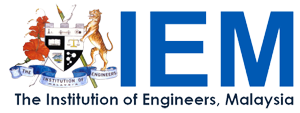Peer Review and Plagiarism Policies
IEM Journal practices Double-Blind Peer Review vigorously, where the names of Authors are not revealed to the Reviewers, and the names of Reviewers are also not disclosed to the Authors.
Every paper submitted to the IEM Journal will be subjected to Double-Blind Peer Review. The Principal Journal Editor (PJE) will assign a Journal Editorial Board (JEB) member who is from the discipline which the paper deals with to be the Section Management Editor (SME) in-charged of this particular manuscript. The SME will subsequently invite a few local or overseas academics from the same discipline to review the paper.
After the Reviewers submit their Reviews, the SME will inform the Authors on the issues to address. Once the Author submit their revised manuscripts, the Reviewers will check again to see if all issues are adequately addressed. If yes, the paper will be sent for Copyediting. If the issues are not adequately dealt with, the Authors have to improve it further, until the Reviewers are satisfied.
Review Criteria
The quality of research is evaluated by the quality of the journal where results are published and by the number of citations. Recently, citations are becoming more important. Increased citations are helping both authors and the journal. A technically correct manuscript is not sufficient reason for its acceptance; a likelihood of citations must be considered.
It is important that the authors show a good recognition of the state-of-the-art in the subject area. We will usually expect a minimum of 10 references, primarily to recent journal papers. Citations of textbooks and web pages should be used very rarely. In order to verify if the IEM Journal is the right journal for manuscript submission authors may check if they can link their finding to other work published in the IEM Journal.
Estimate the interest of readers
- Is the described subject of current interest to IEM Journal readers?
- Is the title interesting and adequate?
- Is the abstract exciting?
- Is the length of manuscript adequate?
- Is the manuscript clearly written?
The Review Process:
- Manuscript Submission: Authors submit their research articles to the journal, after which the Editor in Chief assigns the manuscript to the Section Managing Editor (SME) for further handling.
- Manuscript Check and Selection: The Managing Editor and editorial team perform an initial check and selection process. They may accept the manuscript directly, reject it, or decide to proceed with the review. Additionally, a plagiarism check using iThenticate is conducted for each submitted manuscript.
- Manuscript Reviewing Process: The SME requests at two experts in the field to review the manuscript. The peer-review process is conducted as a double-blind review, meaning the identities of both the reviewers and authors are concealed from each other. Reviewers are provided with a review form provided.
- Notification of Manuscript Acceptance, Revision, or Rejection: Based on the feedback received from the reviewers, the SME informs the author of the manuscript's acceptance, the need for revision, or rejection. This communication is done while maintaining the anonymity of the reviewers.
- Paper Revision: If revisions are requested, the author is given the opportunity to revise the manuscript based on the comments and suggestions provided by the reviewers. The author may also submit a response letter addressing each comment and explaining the changes made.
- Revision Submission based on Reviewer Suggestion: After making the necessary revisions, the author resubmits the revised manuscript following a similar submission route as in step 1.
- Notification for Acceptance: If the reviewer is satisfied with the revisions, the SME notifies the author of the manuscript's acceptance for publication.
- Galley Proof and Publishing Process: The accepted manuscript undergoes the galley proof stage, where formatting, copyediting, and proofreading are performed. After finalizing these processes, the paper is published, either in print or online, as per the journal's publishing format.

Plagiarism Policy
The plagiarising author can only count on very short term “gain” because within a year or two the fact of plagiarism will become common knowledge and the consequences will be severe. With search engines available on the web it is much easier to detect unacknowledged copying of original text.
The IEM Journal is a member of Crossref, and subscribes to its Similarity Check service (access to iThenticate plagiarism detection software). The iThenticate service functions by comparing the manuscript against over 100 million articles from professional journals, periodicals and publications around the world. This allows the Journal Editorial Board (JEB) to detect any possible plagiarism in every submission received.
Authors whose manuscripts are found to be over 30% in similarity will be required to revise their manuscript until its similarity score is lower than 30%.






